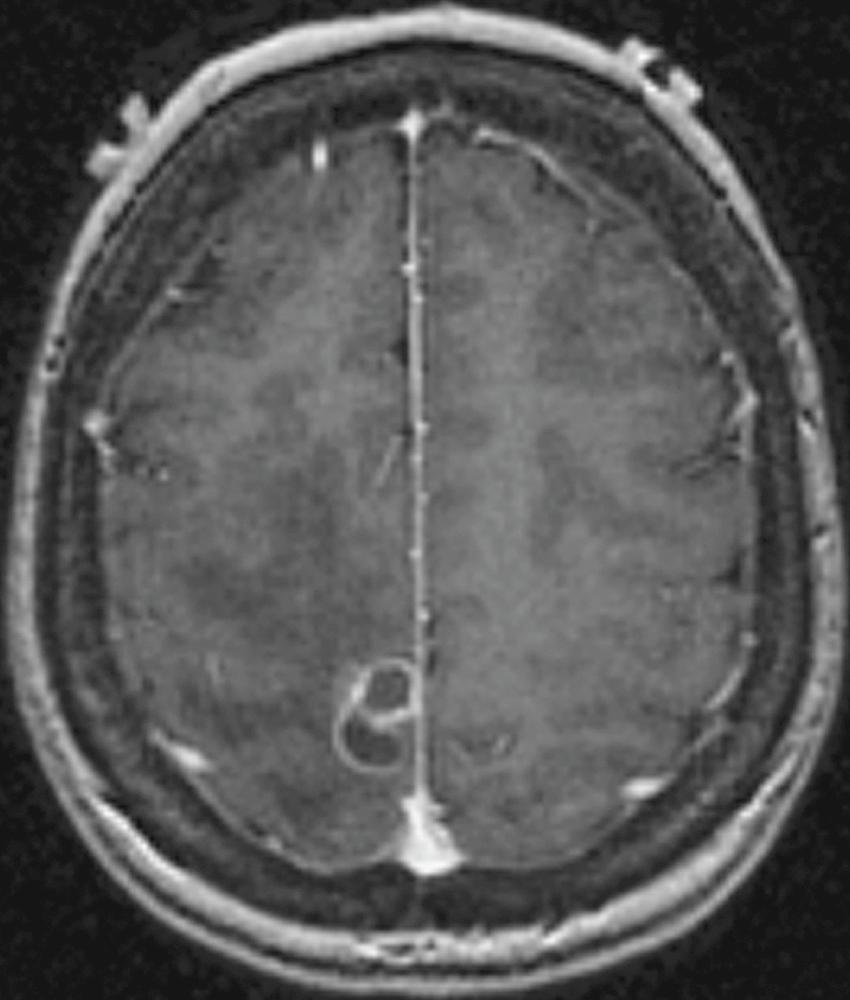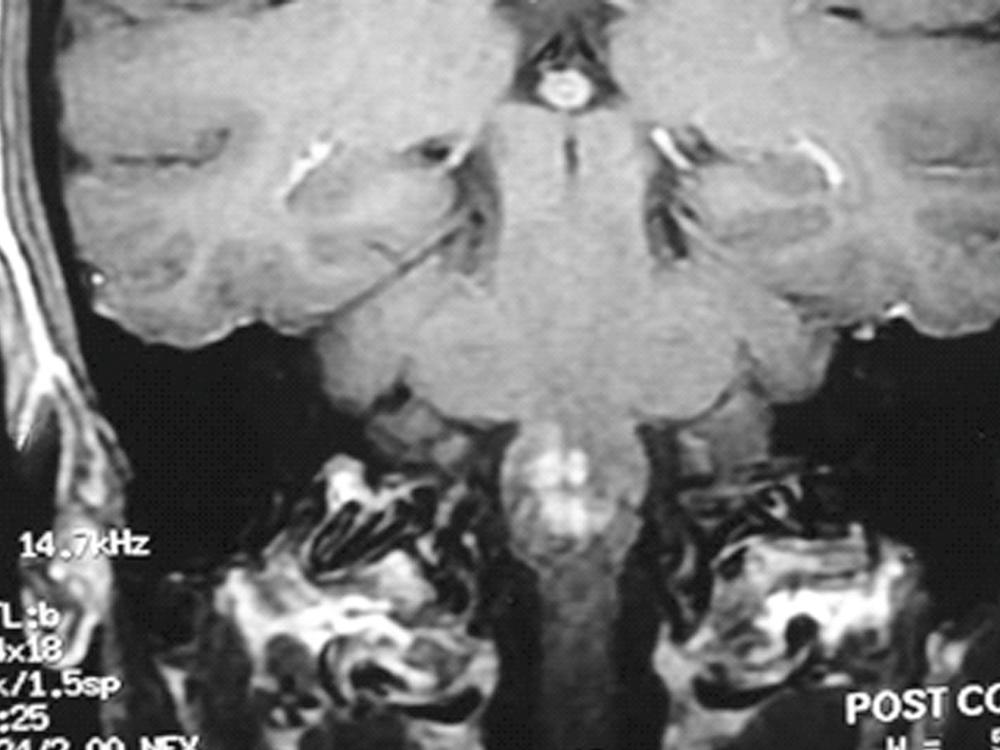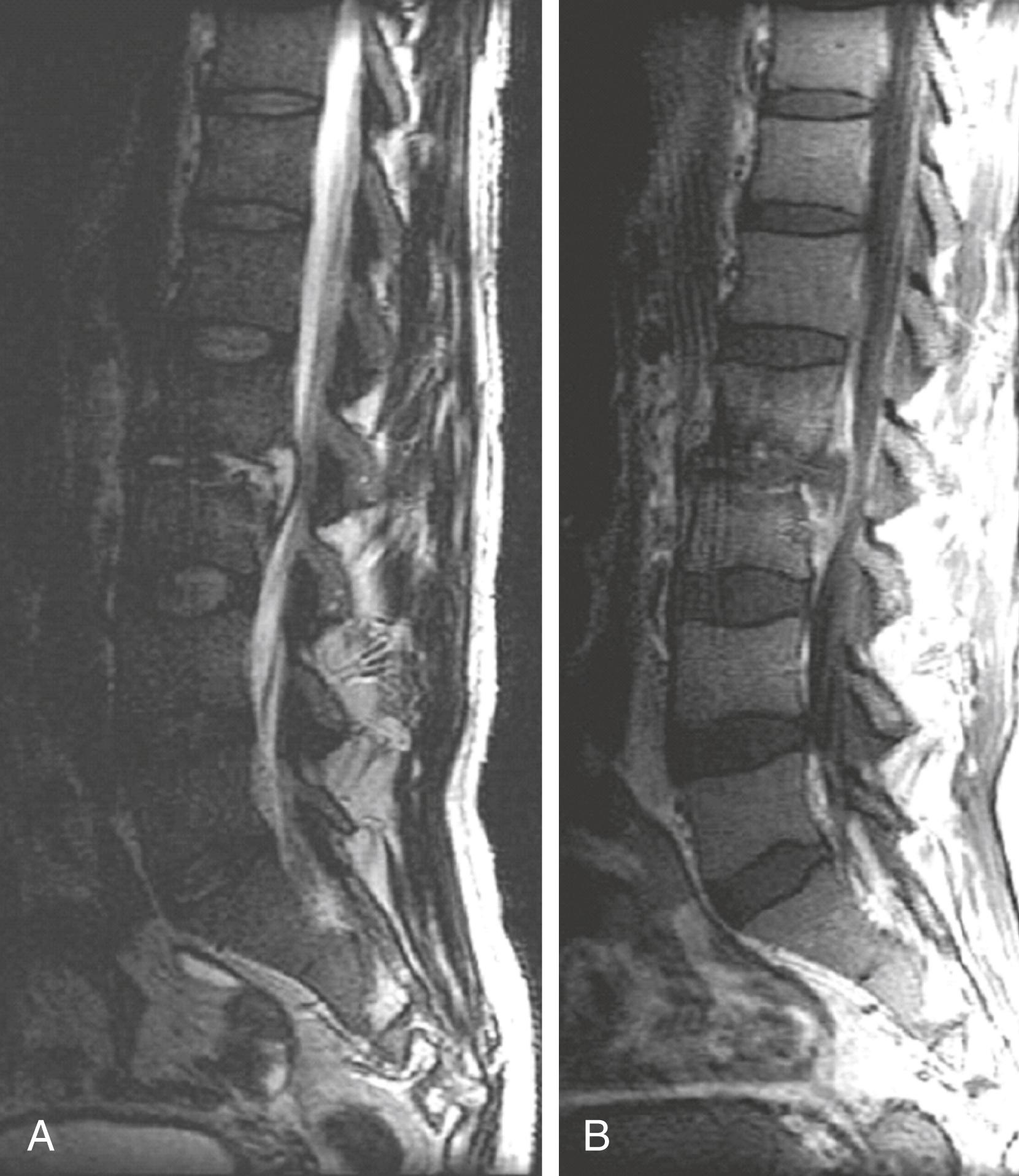Physical Address
304 North Cardinal St.
Dorchester Center, MA 02124
A brain abscess affects the brain’s parenchyma directly, whereas parameningeal infections produce suppuration in potential spaces covering the brain and spinal cord (epidural abscess and subdural empyema) or produce occlusion of the contiguous venous sinuses and cerebral veins (cerebral venous sinus thrombosis).
The frequency of various causes of brain abscess ( Table 382-1 ) in the population is difficult to ascertain because of wide variations among case series, in part owing to referral patterns. Improvements in health care have lowered the incidence to about 3 per 100,000 person years. Brain abscesses account for less than 1% of intracranial mass lesions in developed countries but are significantly more common in developing countries. Males predominate in virtually all series of brain abscess.
Otogenic
|
| Dental infections |
Cardiac
|
Pulmonary
|
| Esophageal stricture dilatation |
| Cerebral infarcts and tumors |
| Penetrating and nonpenetrating head injury |
| Postoperative neurosurgical procedure |
| Dermal sinus tracts |
| Sepsis |
| Immunosuppression |
On average, 90% of brain abscesses are a consequence of a focus of suppuration elsewhere in the body, with the remainder due to introduction of the infection from head wounds or neurosurgical or other invasive procedures. Disease of the paranasal sinuses, middle ear, and mastoid cells account for approximately 40% of brain abscesses. Dental infections of the upper molars can be a source of infection, but invasive dental procedures otherwise are not. Cyanotic congenital heart disease ( Chapter 55 ), a patent foramen ovale, and pulmonary arteriovenous malformations (as are seen in hereditary hemorrhagic telangiectasia; Chapter 159 ), also are risk factors for bacterial brain abscess, apparently because venous infection bypasses the pulmonary circulation and spreads directly to the systemic circulation. Fungal brain abscesses are rare in immunocompetent adults but can be caused by aspergillosis in immunocompromised patients. Brain abscesses caused by Toxoplasma species ( Chapter 320 ) usually occur in immunocompromised patients, and especially in patients with advanced human immunodeficiency virus (HIV) infection.
Brain abscesses are collections of purulent material (neutrophils and necrotic tissue) caused by infection with bacterial, fungal, or parasitic organisms. When contiguous to the brain, infection enters by direct extension or by traveling along veins with associated thrombophlebitis of pial veins and sinuses. Brain abscesses arising from sinus or ear infection, or those from penetrating injury, are generally proximate to the site of the originating infection. For instance, abscesses originating from the frontal and sphenoid sinuses typically affect the frontal and temporal lobes, whereas those originating from the ear affect the anterolateral cerebellar hemispheres or middle and inferior temporal lobes.
More commonly, the brain is seeded hematogenously by the offending microorganism from a distant site. Hematogenous dissemination typically results in lesions located at the junction of white and gray matter.
Within the brain, the infection begins as a cerebritis with perivascular infiltrates and infiltration of neutrophils into the brain parenchyma. With time, the developing abscess is characterized by a purulent exudate that includes necrotic brain tissue as well as viable and necrotic neutrophils. Granulation tissue develops at the interface between necrotic and viable tissue, and eventually, the abscess is walled off by a fibrous capsule. Formation of the capsule depends on the virulence of the organism and the immune status of the individual. More virulent organisms cause larger lesions, more necrosis, earlier ependymitis, and a greater degree of inflammation outside the collagen capsule.
The clinical picture reflects a triad of the infectious nature of the lesion, focal brain involvement, and an increasing intracranial mass effect ( Table 382-2 ). One or two elements may be absent, particularly early in the course. Among infectious symptoms, fever is present at onset or early in the course in only about 60% of cases. Neck stiffness is an infrequent complaint, and meningeal signs are elicited in about 30% of cases. The absence of classical signs may delay diagnosis.
| Focal neurologic deficits | 80% |
| Headache | 65% |
| Fever | 55% |
| Disturbed consciousness | 50% |
| Hemiparesis | 50% |
| Nausea, vomiting | 30% |
| Nuchal rigidity | 30% |
| Dysarthria | 20% |
| Seizures | 20% |
| Visual disturbance | 15% |
Focal neurologic deficits depend on the site and size of the lesion, which in turn will be determined by the causative agent and any underlying condition that may predispose to the development of brain abscess. In some patients, seizures precede the diagnosis. Temporal lobe abscess, often caused by spread of an otogenic infection, may manifest as contralateral homonymous superior quadrantic visual field defects and, if in the dominant hemisphere, with aphasia. Motor deficits eventually occur in 40 to 50% of supratentorial abscesses. Cerebellar abscesses, which are often caused by aural-mastoid infections, are characterized by ipsilateral limb ataxia; there may also be abnormal head positioning (forward and away from the side of the lesion) and nystagmus that is slow and coarse on gaze to the side of the abscess and rapid in the opposite direction. Patients with multiple brain abscesses may have multifocal signs or encephalopathy. Patients with Toxoplasma species ( Chapter 320 ) brain abscesses often have movement disorders because these abscesses frequently localize to the basal ganglia. In fact, nearly all patients with HIV infection in whom hemiballism or hemichorea is present have Toxoplasma species brain abscesses.
Headache is an important initial symptom in 80 to 90% of patients with bacterial abscess but is less frequent in patients with fungal abscesses. Symptoms of increased intracranial pressure, such as nausea, depressed level of consciousness, and papilledema, occur less often. The development of headache in a patient with a known chronic anaerobic infection, such as aural-mastoid, paranasal sinus, or pulmonary suppuration, suggests the possibility of brain abscess. Similarly, the development of headache in a child with cyanotic congenital heart disease is often related to a brain abscess. Tetralogy of Fallot ( Chapter 55 ) is the most common congenital heart anomaly associated with brain abscess.
Examination of the cranium, ears, paranasal sinuses, oral cavity, heart, and lungs may provide important clues to the etiology, as may overt signs of infection at other sites. Laboratory examination often, but not invariably, reveals a leukocytosis, an elevated erythrocyte sedimentation rate, and an increased C-reactive protein level. Cultures of blood and sputum may identify the organism and its antimicrobial sensitivity. Lumbar puncture, generally contraindicated in the setting of brain mass lesions because of concern about the risk of brain herniation from increased intracranial pressure, reveals a moderately increased cerebrospinal fluid (CSF) pressure with early abscess. A mild to moderate CSF pleocytosis and protein levels <100 mg/dL may be observed. CSF glucose is normal, and the CSF is sterile unless there is a concomitant meningitis.
Magnetic resonance imaging (MRI) can detect early changes such as brain edema and is preferable to computed tomography (CT). In the early cerebritis stage, T2-weighted MRI shows abnormally high signal intensity corresponding to low signal intensity on the T1-weighted images. The fluid-attenuated inversion recovery (FLAIR) sequence provides superior visualization of brain edema. On T1-weighted images, the area of cerebritis that is seen initially as a low-signal-intensity, ill-defined area later progresses to a central cavity with slightly higher signal intensity than CSF, surrounded by edema that is slightly hypointense in comparison to brain parenchyma. Later stages of infection show central necrosis and formation of a rim of slightly high-signal intensity on T1-weighted images ( Fig. 382-1 ). With gadolinium administration, a ring-enhancing lesion owing to leakage of the contrast material at the rim of the lesion is seen where there is breakdown of the blood-brain barrier. Diffusion-weighted imaging helps differentiate abscesses from brain tumors ( Chapter 175 ); pus in the abscess cavity demonstrates high signal with decreased apparent diffusion coefficient values, whereas necrotic tumor cavities demonstrate the opposite.

Surgical aspiration or excision of the lesion may be necessary to establish a microbial diagnosis. Multiplex polymerase chain reaction testing can rapidly identify bacterial organisms and may be able to detect antibiotic-resistance genes. Gram stain and culture from abscess fluid, with proper handling, have high yield, with or without previous antibiotic therapy. If immediate surgery is planned, antibiotics can be deferred until culture material has been acquired.
Brain abscess requires urgent intervention. Surgical intervention has the advantage of establishing a definitive diagnosis, identifying the causative organism, and determining antibiotic susceptibility.
Because of the risk for cerebral herniation with large lesions, treatment of cerebral edema (intravenous [IV] dexamethasone 16 to 24 mg/day in four divided doses) may be needed even while initiating surgical intervention. Corticosteroids often decrease edema within 8 hours but may retard the formation of a capsule around the brain abscess, suppress the immune response to the infection, and decrease penetration of antibiotics. Hence, they should be used for short periods, usually only until surgical decompression by needle drainage or surgical removal is possible.
Toxoplasma brain abscesses are not accompanied by capsule formation and hence respond well to antibiotic therapy alone. As a result, patients with acquired immunodeficiency syndrome and suspected cerebral toxoplasmosis ( Chapter 320 ) should initially receive antimicrobial therapy, and the abscess does not need to be drained.
For other abscesses, empirical antibiotic therapy ( Table 382-3 ) is recommended prior to surgery, based on the likely source of infection, knowledge of proved or suspected pathogens, as well as familiarity with a drug’s spectrum of activity and penetration into the central nervous system. Because abscesses may include multiple organisms, antibiotic coverage should include both aerobic and anaerobic bacteria.
| PREDISPOSING CONDITION | COMMON PATHOGENS | ANTIMICROBIAL AGENTS ∗ |
|---|---|---|
| Dental abscess | Streptococci, Bacteroides fragilis | Penicillin + metronidazole |
| Chronic otitis | Bacteroides fragilis; Pseudomonas, Proteus, Klebsiella species | Cefotaxime or ceftriaxone + metronidazole; ceftazidime or cefepime for Pseudomonas species |
| Sinusitis | Streptococci; Haemophilus, Staphylococcus species | Cefotaxime, ceftriaxone, or nafcillin + metronidazole |
| Penetrating trauma or postsurgical | Staphylococcus, Pseudomonas, Enterobacter species; streptococci | Nafcillin or vancomycin + ceftriaxone or cefotaxime + metronidazole |
| Bacterial endocarditis or drug use | Mixed flora, streptococci, Staphylococcus species | Nafcillin or vancomycin + ceftriaxone or cefotaxime + metronidazole |
| Congenital heart disease | Streptococci | Cefotaxime or ceftriaxone |
| Pulmonary infection | Nocardia species, Bacteroides fragilis , streptococci, mixed flora | Penicillin + metronidazole + trimethoprim-sulfamethoxazole |
| Gastrointestinal infection | Listeria monocytogenes | Ampicillin + gentamicin |
| HIV infection | Toxoplasma gondii | Pyrimethamine + sulfadiazine + folinic acid |
| Diabetes/ immunosuppression | Fungal species | Amphotericin, voriconazole or fluconazole |
∗ See Table 266-4 in Chapter 266 for dosing schedules.
However, antibiotics may not penetrate the cavity of more advanced brain abscesses owing to the absence of blood supply in the necrotic lesion. Therefore, surgical drainage is usually the treatment of choice. Fungal brain abscesses may require aspiration and intracavitary antifungal drugs in addition to prolonged systemic antifungal therapy.
When surgery cannot be performed (e.g., in a remote location where neurosurgical expertise may not be available), empirical antibiotic therapy is the only alternative. A trial of nonsurgical treatment may also be considered in patients with (1) small lesion size; (2) an already identified pathogen; (3) no symptoms or signs of increased intracranial pressure requiring neurosurgical intervention; (4) a deep or inaccessible lesion; (5) multiple abscesses; (6) a contraindication to surgery (e.g., a bleeding diathesis); (7) a short duration of symptoms, which suggests that the lesion is in the cerebritis stage; and (8) availability of monitoring with MRI.
In patients who are suspected of having a brain stem abscess, the possibility of listerial infection ( Chapter 272 ) should be considered ( Fig. 382-2 ), even in the absence of documented immunodeficiency. Empirical parenteral antibiotics to cover Listeria species should be started ( Chapter 272 ).

Before the CT scan era, the mortality of brain abscesses ranged from 40 to 60%, and even in the era of modern neuroimaging, the mortality rate remains about 20%. , About 70% of patients recover fully. In post-transplantation patients and those with deep hemispheric or brain stem abscesses, mortality rates may exceed 80%. Other factors associated with a poor prognosis include extremes of age, multiple abscesses, and diagnostic delay in the absence of systemic signs of infection. An impaired level of consciousness is a poor prognostic sign even with early hospitalization and rapid diagnosis. Anaerobic and gram-negative organisms and culture-negative cases also have a poor prognosis. Seizures ( Chapter 372 ) develop in up to 50% of patients, sometimes after latencies as long as 5 years.
Infection within the epidural space around the spinal cord is an uncommon, but often readily treatable, potential cause of paralysis and death. The epidural space surrounds the dural sac and is limited by the posterior longitudinal ligament anteriorly, the ligamenta flava and the periosteum of the laminae posteriorly, and the pedicles of the spinal column and the intervertebral foramina containing their neural elements laterally. The space communicates with the paravertebral space through the intervertebral foramina. Superiorly, the space is closed at the foramen magnum. Caudally, the space is closed by the sacrococcygeal ligament. The epidural space contains loose areolar connective tissue, semiliquid fat, lymphatics, arteries, an extensive plexus of veins, and the spinal nerve roots.
Spinal epidural abscesses can result from hematogenous spread of infection; risk factors include IV drug use, organ transplantation, chronic steroid use, malignancy, and diabetes. Local infection after acupuncture for back pain or epidural analgesia can also cause epidural abscesses. Cutaneous sites of infection are the most common remote sources, especially in IV drug users. Abdominal, respiratory tract, and urinary sources are also common. Osteomyelitis may be a cause of either direct extension or hematogenous spread, particularly when associated with sepsis. Contiguous spread may occur from epidurally placed catheters, psoas abscesses, decubitus ulceration, perinephric and retropharyngeal abscesses, or surgical sites. Minor back trauma has been implicated in causing a paraspinal hematoma, which may be seeded hematogenously. Staphylococcus aureus is the most common organism isolated from spinal epidural abscesses, followed by streptococci, gram-negative bacilli, and anaerobic organisms.
Because the dura mater around the cord is adherent to the vertebral column anteriorly, more epidural abscesses lie posteriorly, and because no anatomic barriers separate the spinal segments in the posterior epidural space, such abscesses usually extend over several vertebral segments. Spinal cord dysfunction can be a result of local inflammation, compression and edema of the spinal cord, thrombophlebitis, or ischemic injury from venous thrombosis or from compression of the spinal arteries.
The presence of a risk factor such as intravenous drug use, an indwelling vascular catheter, or an infection at another site (>80% of patients) in the setting of neurologic deficits or back or radicular pain should suggest a spinal epidural abscess. , The clinical manifestations can be divided into four stages ( E-Table 382-1 ). Back pain (in about 70% of patients) and fever (in about 65% of patients) are common. With focal percussion, pain over the spine can be elicited in about 20% of patients. Radicular pain can be mistaken for sciatica, a visceral abdominal process, chest wall pain, or cervical disc disease. Clinical signs are often substantially greater than would be predicted from the anatomic extent of pus or granulation tissue.
| STAGE 1 | |
| Back pain Fever |
71% 66% |
| STAGE 2 | |
| Radicular pain | 20% |
| STAGE 3 | |
| Muscle weakness Sphincter incontinence Sensory deficits |
26% 24% 13% |
| STAGE 4 | |
| Paralysis Quadriplegia |
31% 3% |
The differential diagnosis includes compressive and inflammatory processes involving the spinal cord: transverse myelitis ( Chapter 380 ), herniation of an intervertebral disc ( Chapter 369 ), epidural hemorrhage ( Chapter 369 ), or metastatic tumor ( Chapter 175 ), none of which are associated with evidence of systemic infection. It must also be distinguished anatomically from the rare intramedullary spinal cord abscess. Blood leukocytosis may not be present, but the sedimentation rate is often elevated. Other infectious processes that may produce back or neck pain or tenderness must be excluded: bacterial meningitis ( Chapter 381 ), perinephric abscess, disc space infection, and bacterial endocarditis ( Chapter 61 ).
Lumbar puncture should be avoided in patients suspected of having a spinal epidural abscess, for fear of spreading the infection to the subarachnoid space and causing meningitis. Gadolinium-enhanced MRI ( Fig. 382-3 ) is the method of choice for diagnosis, and paraspinal edema on MRI is the most sensitive feature for a spinal epidural abscess, but MRI findings in patients undergoing epidural analgesia can resemble those of epidural spinal abscess even when no infection is present.

Unfortunately, as many as 75% of patients with spinal epidural abscess are misdiagnosed at the time of initial presentation. If the condition goes unrecognized, symptoms can evolve over a period of hours to days to paralysis below the spinal level of infection.
Become a Clinical Tree membership for Full access and enjoy Unlimited articles
If you are a member. Log in here